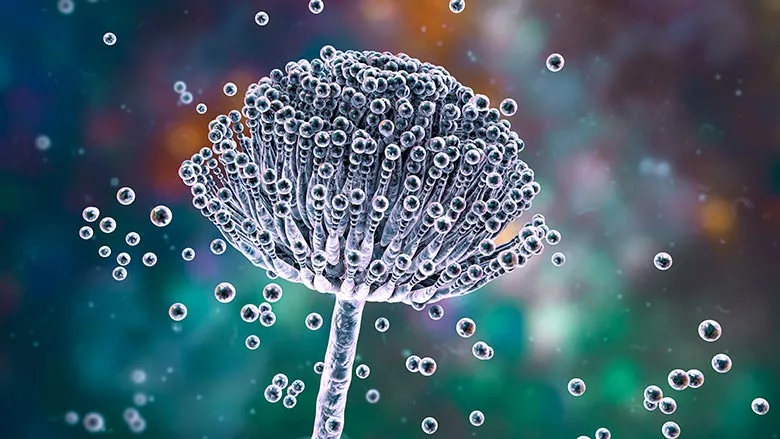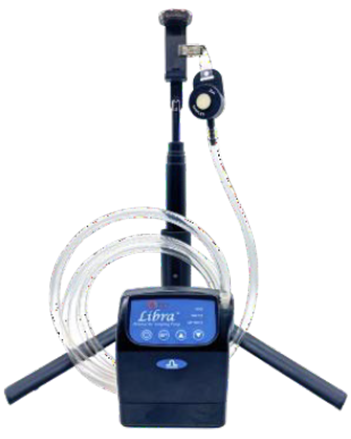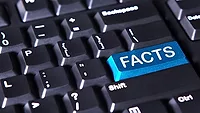Mycotoxins: The Menace behind the Mask

Photo credit: TopMicrobialStock / iStock / Getty Images Plus via Getty Images
In the mold remediation industry, the primary focus in regard to potentially harmful health effects, has historically been centered around mold colonies and the spores they release into the building environment, and that may well be a valid concern.
Let us assume we have an environment that has visible mold growth (black or otherwise). Perhaps joined with some type of air quality testing that indicates an elevated level of mold spores. Now, let us further suppose under those conditions that we also have building occupants that are experiencing negative health effects, perhaps severely so. Imagine this happening repeatedly throughout the years, to more and more people. It would be understandable to conclude that the mold (cause) is the menace creating the health problem (effect).
Now to be sure, mold itself can have deleterious effects on someone’s health. At a minimum, mold can trigger an allergic reaction in individuals. As with other allergens, that may be more or less severe depending on the person and the exposure level.
However, with the advent of new technologies and the research they have allowed, the true menace is unmasked.

Photo credit: fcscafeine / iStock / Getty Images Plus via Getty Images
Mycotoxins!
Mycotoxins are chemical poisons produced by certain mold species under certain conditions. There are several key reasons that make the discovery and removal of these poisons so difficult. For starters, investigative tools able to identify airborne mycotoxins recently been available to our industry. In the past testing for mycotoxins was typically limited to the individuals themselves or surface areas in the environment.
The problem with the former is that even if a person did test positive for mycotoxins in their system, it would be unknown as to where that mycotoxin exposure had occurred. Was it an environmental issue, from a dietary source or possibly something entirely different?

Photo credit: RespirareLabs
With the latter, the testing of surfaces does not necessarily indicate what may be in the air inhaled and since most people are not going around licking the furniture, that information may be a false flag.
Now, however, we do have the ability to test the air for the presence of mycotoxins and identify the type and concentration of those toxins. This has been a huge step forward in helping affected people know for sure if their home is contaminated, and more importantly, whether the remediation efforts to cleanse the home of these toxins have been effective. This new ability to empirically determine the presence (or post-remediation absence) of mycotoxins has greatly enhanced our efforts to solve another huge challenge.
Removing Mycotoxins from the Building Environment
Recent research and case studies have shown that when performing traditional mold remediation or removal, even if structural elements of the contaminated building itself are mitigated, any mycotoxins present are left behind after the removal process. Mycotoxins show up in homes that have had mold and mold removal done years prior and yet the toxins remain.
Recent research and case studies have shown that when performing traditional mold remediation or removal, even if structural elements of the contaminated building itself are mitigated, any mycotoxins present are left behind after the removal process.
Mycotoxins are not a living thing, such as mold spores. They are essentially hitchhikers, which can attach themselves to mold spores dispersed into the environment. When the mold spore removal happens during remediation, the mycotoxins detach.
They are immitigable unlike a living mold spore, and due to their sub-micron size, they are irremovable with conventional filtration.
Therefore, an entirely new way to approach the removal of mycotoxins developed in order to address these challenges. Protocols and products have developed which allow us to introduce a new “vehicle” for mycotoxin adherence. Then this “vehicle”, with the mycotoxins still attached is systematically detached from the environment. With post-remediation testing in place, we do not have to wonder if we have successfully removed them…we can prove it!
In a time when more and more individuals are finding it difficult, if not impossible in a home or office that has compromised air quality, we can be thankful that new research and technology has made these protocols and products available to our industry, aiding in effectively addressing the needs of our customers.
Looking for a reprint of this article?
From high-res PDFs to custom plaques, order your copy today!







